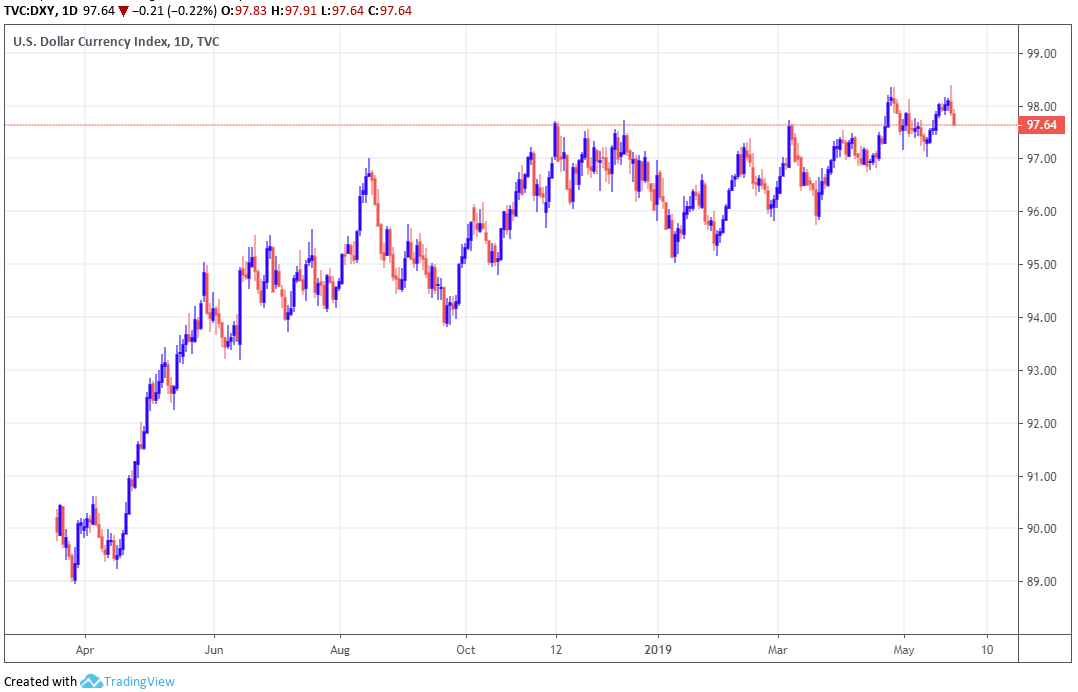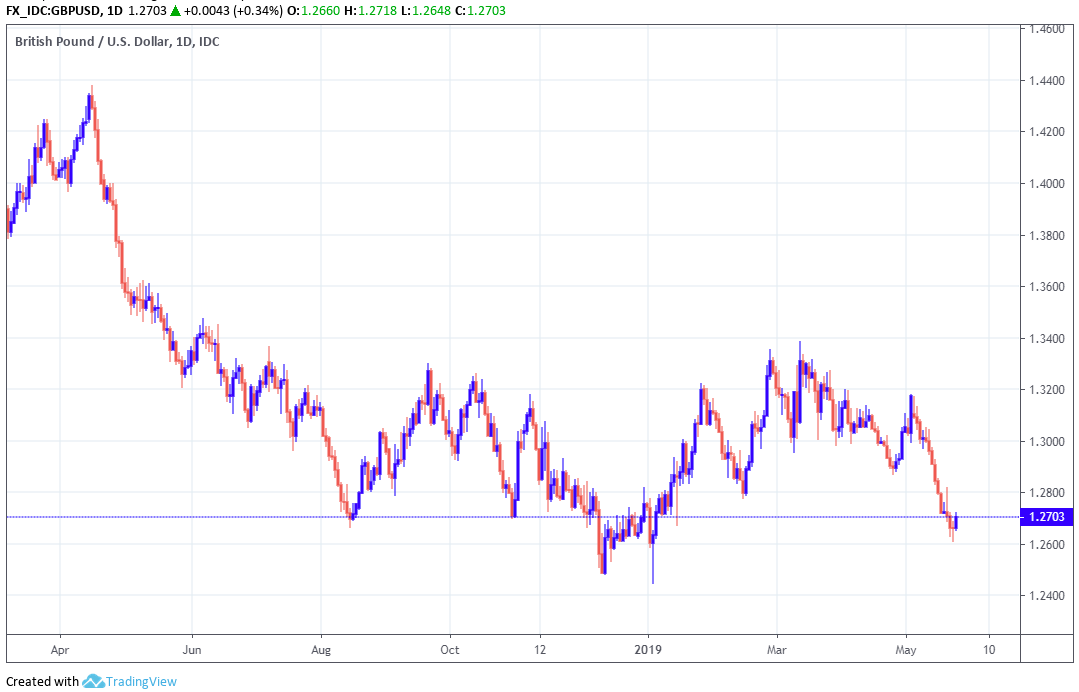U.S. Dollar Falters after Economic Data Points to Slowing Growth Pulse
- Written by: James Skinner

© Adobe Stock
- USD softens as GDP growth pulse slows and trade war escalates.
- Slowing economy could encourage more Fed rate cut speculation.
- Trade war morphs into economic conflict, threatens USD, economy.
The Dollar was on its back foot Friday, trading lower against most of its developed world rivals, as markets responded to another batch of data that suggests the U.S. economy's pulse weakened early in the second-quarter.
Durable goods orders fell by 2.1% in April, partially reversing a 2.6% gain from March, when financial markets had looked for a decline of only 2%. But it's the core number that garnered more of the market's attention.
Core-durable goods orders, which remove aircraft sales from the data because of the distorting effect such large-ticket items have on underlying trends, stalled with 0% growth in April when market were looking for a 0.1% gain.
"Durable goods orders slumped in April, with the detail even uglier than the headline," says Katherine Judge, an economist at CIBC Capital Markets. "Core capital goods orders fell by 0.9%, while the prior month was revised down substantially (now 0.3% vs. 1.4% prior). While the three-month trend is still in positive territory, we will need to see better numbers ahead for it to stay that way. Today's data reinforces our forecast for a deceleration in business investment in Q2 and could weigh on the USD today."
Durable goods data measures spending on all manner of equipment that is key for the continued operation and growth of U.S. companies. The data is also an important component of business investment, which is a key input in the calculation of GDP.
"The most important element of the report is the trend in capital goods orders, ex-defense and aircraft. The recent numbers have been much better than we expected, given the downshift in the ISM manufacturing index," says Ian Shepherdson, chief U.S. economist at Pantheon Macroeconomics. "Core capital goods orders are the best single indicator of the rate of growth of business investment in equipment, with a short lag."
Markets care about the data because it provides a telling insight into companies' willingness to invest in equipment, and therefore their short-term outlook for the economy. Durable goods orders are also an important component of business investment, which is a key input in the calculation of GDP.
Insights into the extent that demand is either rising or falling are important for markets that are seeking to estimate economic growth within a given period, which is important for both the inflation and interest rate outlooks.
"The weakness of the April durable goods data, which showed underlying orders unchanged following a downwardly-revised plunge in March, provides further evidence that economic growth is slowing sharply in the second quarter," says Andrew Hunter at Capital Economics.

Above: U.S. Dollar index shown at daily intervals.
The Dollar index was 0.09% lower at 97.73 following the release Friday but is up 1.8% for 2019. The Pound-Dollar rate was 0.04% higher at 1.2669 and the Euro-Dollar rate was 0.11% higher at 1.1195.

Above: Pound-to-Dollar rate shown at daily intervals.
Minutes of the latest Federal Reserve meeting suggested there's also almost no chance of an rate hike in 2019 because rate setters agreed that combination of "moderate" economic growth and below-target inflation would mean they could be "patient" for "some time" before adjusting rates again.
However those minutes also suggested there's very little chance of the interest rate cut, which markets have been betting on all year, being delivered in 2019 because most Fed voters thought current below-target levels of inflation will prove "transitory" and the economy would pick up later in the year.
Interest rate decisions are normally made in relation to the inflation outlook but impact currencies through the push and pull influence they have over international capital flows. Rising rates normally draw bids for a currencies while declining rates drive flows away from them.
"We really wanted to buy into a sterling relief rally, despite acknowledgement that conditions can only be worse afterwards as various Tories throw elbows. The probability of a no-deal Brexit is very high. Sure enough, May announced she will resign as party leader on June 7 and as prime minister as soon as the party picks a successor. Sterling rallied from 1.2603 around 3 am yesterday to 1.2718 at the high so far today. Our order to go short lies at 1.2722," says Barbara Rockefeller at RTS Forex.
Friday's data comes hard on the heels of IHS Markit PMI surveys that suggested activity in the U.S. manufacturing and services sectors fell sharply in May, a month which coincides with the escalation of the U.S.-China trade war.
This PMI result, and an escalation of the U.S.-China tariff fight into an all-out economic conflict, prompted selling of the Dollar late Thursday and through the overnight session.
The PMI indices are computed using responses that are partly subjective and sentimental in nature. PMI surveys, while often a good indicator of economic growth, also frequently overstate or underestimate trends. That's particularly so during times when politics are impacting markets.
"The dollar index crashed yesterday from 98.22 in the early morning to 97.73 this morning," Rockefeller adds. "The risk-off drop across asset classes was likely due to the dawning realization that the US-China trade war is the Real Deal and has vast potential to wreak damage all across the US and global economy. Up to now, the dollar has been the ironic beneficiary of a rise in risk aversion. Yesterday the birds came home to roost."
Time to move your money? Get 3-5% more currency than your bank would offer by using the services of foreign exchange specialists at RationalFX. A specialist broker can deliver you an exchange rate closer to the real market rate, thereby saving you substantial quantities of currency. Find out more here.
* Advertisement




